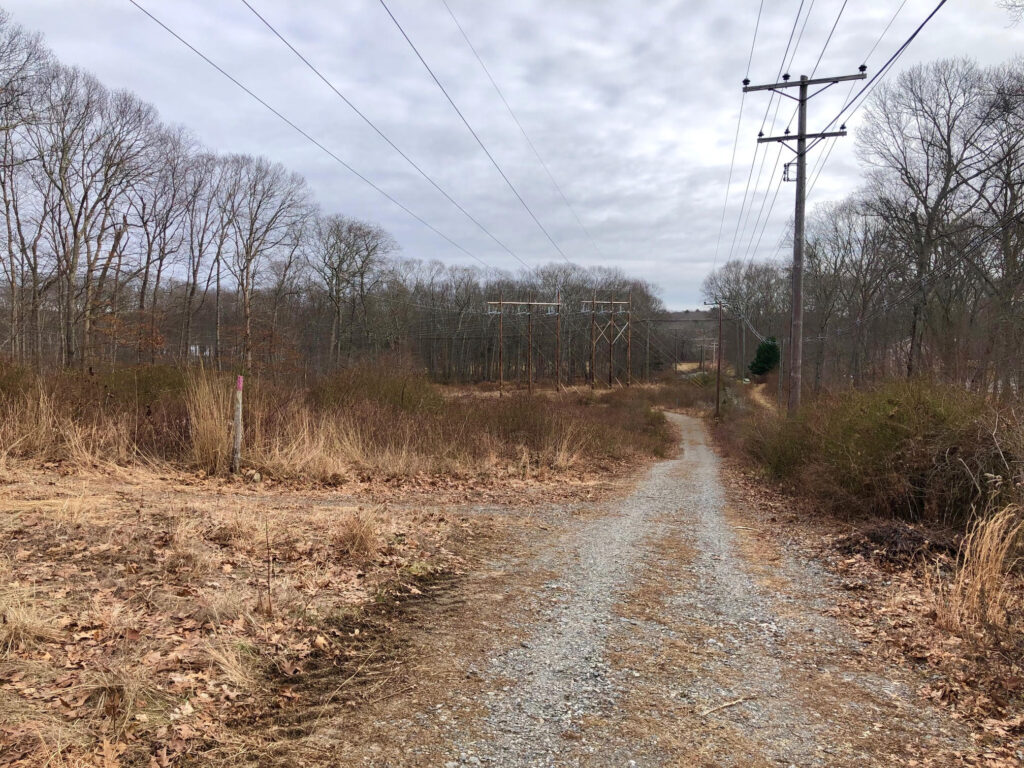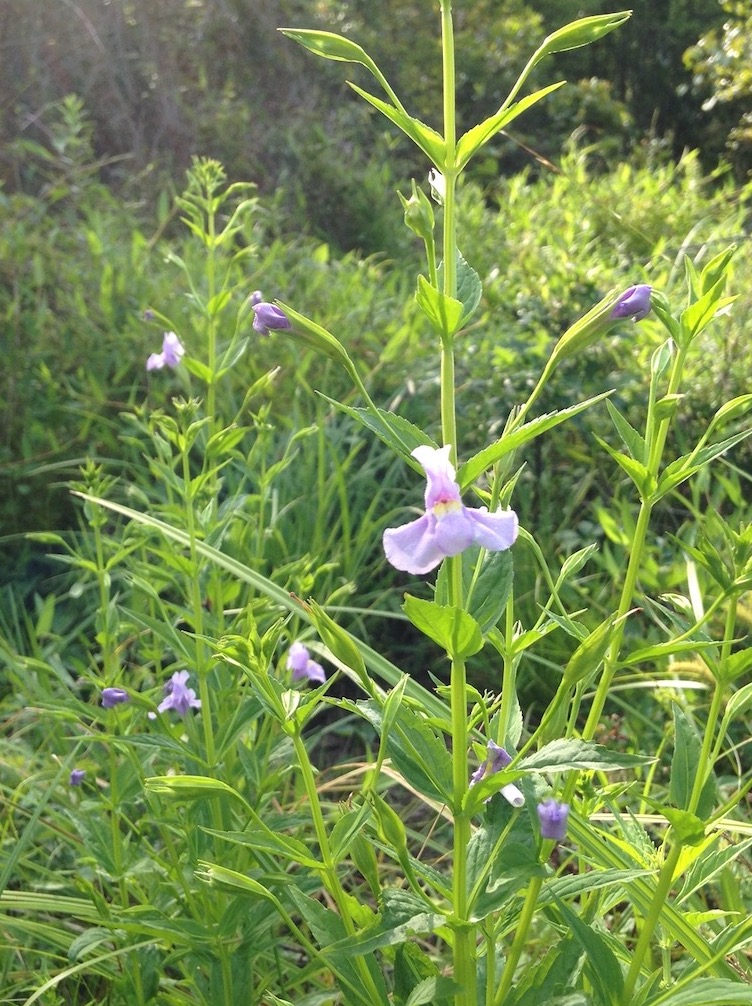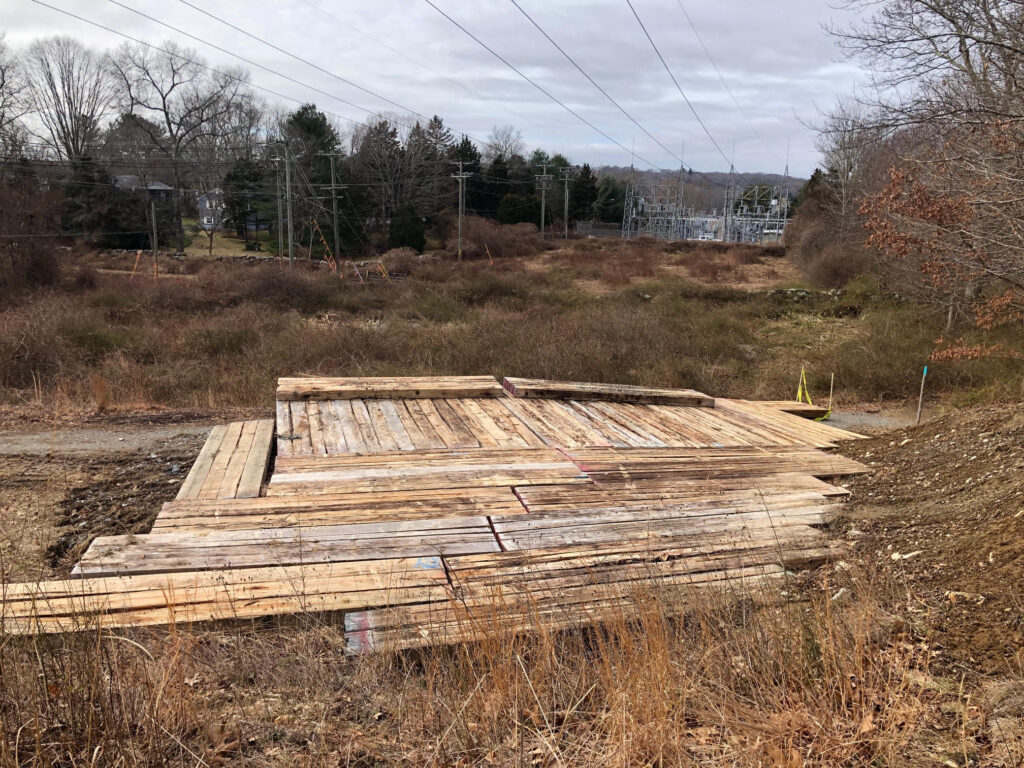With multiple land owners and organizations, managing the greenway that connects our Coogan Farm campus to the Nature Center is a complicated process. One of the most challenging relationships is regarding the shared Right of Way (ROW) along the Eversource power lines. From the substation next to Coogan Farm, these lines run east down the farm road and north behind Masonicare to the Mystic Hilton. While this parcel is disturbed land, both due to its many years as a farm road and more recent usage as part of the utility right of way, it is the critical connecting piece of the greenway. Part of the US Fish & Wildlife conservation easement that protects Coogan Farm, this 11-acre parcel serves as shrubland that provides valuable habitat and food for wildlife. This parcel of land is also the essential link in the greenway between DPNC land at Coogan Farm, the Denison Homestead, and the Nature Center. Without it, the greenway would be fragmented to both humans and wildlife.

Recently the Utah Division of Wildlife Resources installed a $5 million “animals-only” overpass at a critical wildlife crossing over six lanes of traffic on I-80. Within six months bears, elk, deer, and even a bobcat carrying its dinner home were observed using the bridge. It may not meet the criteria of pristine habitat, but the undisturbed connections such as these often prove to be more critical to wildlife than our human ideas of aesthetics.
The Right of Way (ROW) on Coogan Farm, while similarly less than perfect, is so much more than just a bridge between two pieces of the greenway. Beyond serving as simple physical connections, these spaces host unique and rare species that other habitats cannot. In 2018, the Connecticut Botanical Society (CBS) Subcommittee on Right-of-Ways noted that ROWs are of particular importance “because they are maintained in an early-successional state, they host a suite of species, many rare, that cannot survive in mature forest or regularly mown fields and lawn.” CBS also notes “130 occurrences of at least 86 state-listed plants (26% of all state-listed plants).”
Early-successional habitats, like the Coogan Farm Right Of Way, host many shrubs and plants including American holly, winterberry, cedar, high bush blueberry, American hazelnut, and native grasses. The wetland below Masonicare is home to many beautiful native wildflowers throughout the season, from miniature violets and bluets in springtime to meadow beauties, monkeyflower and seedbox during the summer, followed by a succession of diverse goldenrod and aster species throughout the fall. These habitats rich in native plants, play an important ecological role as host of important wildlife species such as prairie warbler, brown thrasher, yellow breasted chat, native bees, butterflies, and other important pollinators, while also serving as prime hunting ground for birds of prey.
As a utility right of way, we are required to provide access to Eversource and their contractors for routine maintenance, upgrades, and vegetation management – all of which can impact these plants and animals. Currently, Eversource is doing routine vegetation management and structural maintenance on the Coogan Farm Right Of Way. Our task then becomes one of careful stewardship. Working to minimize the impact of these operations by advocating for the needs of the plants and animals that use the ROW; pointing out sensitive areas in advance, requesting limited vegetation management, and specifying placement of wooden mats. These temporary mats are intended to protect sensitive ecological areas from heavy equipment and trucks. Perhaps most importantly, we must actively work with management crews to encourage invasive species management and the seeding and planting of native species. This type of collaboration enabled restoration of the meadow plants around the base of the poles installed in 2016.
You too can, and should advocate similarly if you have a Right Of Way in your backyard. In September of 2020, the Connecticut Botanical Society presented their findings on extensive research from Connecticut College, the University of Connecticut, the Connecticut Agricultural Experiment Station, and the Connecticut Invasive Plant Working Group on vegetation management in Right of Ways that “would best protect endangered, at-risk species and support biodiversity.” The resulting document, “Recommendations for Electrical Utility Right-of-Way (ROW) Vegetation Management” provides specific steps landowners can take to work with Eversource to protect species diversity in ROWs. For additional information regarding this issue, visit the Connecticut Land Conservation Council’s website at http://ctconservation.org/information-powerline-right-way-vegetation-management In addition, interested parties may contact David Yih or Sigrun Gadwa of the Connecticut Botanical Society for more information or if you are interested in joining the Connecticut Botanical Society Ecology and Conservation Committee or ROW Sub-Committee.




